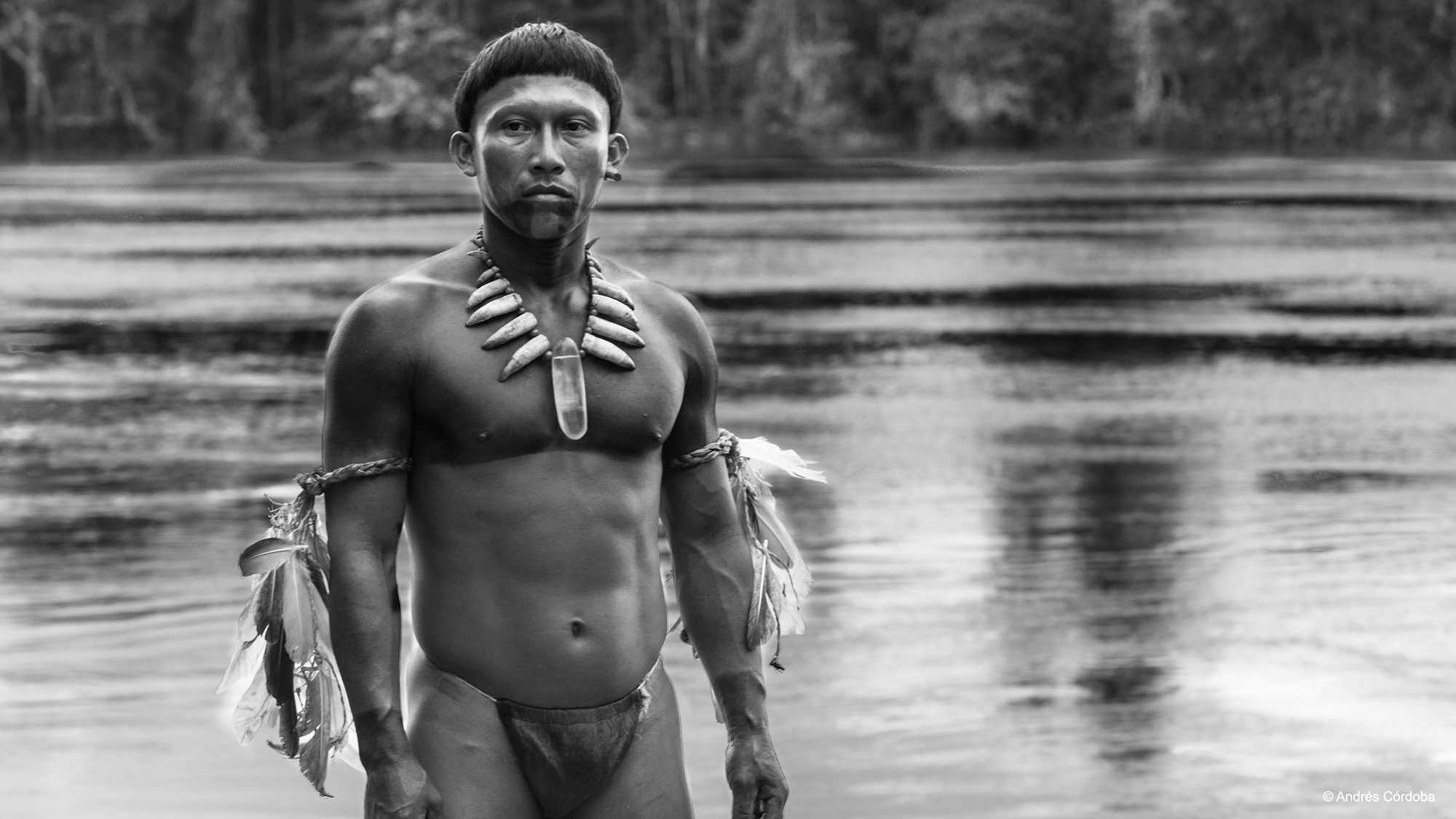Embrace of the Serpent (Ciro Guerra, 2015): Colombia | Venezuela | Argentina
Reviewed by Claire Bachmann. Viewed at the AFI Fest 2015.

This is a film directed by Ciro Guerra who is well known for his other movies, “The Wind Journey’s” and “La Sombra del Caminante”. The actors are Nilbio Torres, Jan Bijvoet, and Antonio Bolivar, with many of the other background actors being natives of the area where it was filmed. Produced by Christina Gallego and Ciudad Lunar Productions, it was filmed in Colombia, Venezuela, Argentina, using Spanish, German, Portuguese, and Amazonian Languages throughout the film. Shot in all black and white, using mostly shaky camera angles and sweeping scenes.
The story follows two parallels stories of foreign explorers who come to the forest a sacred plant, and being guided by Karamakate , in the first story, the foreign man is deathly ill when he embarks on the journey and does not “abide by the gods rules” of eating no fish and keeping all of his possessions throughout the story. As the movie switches between both stories, you see the second foreign man abide by the rules, disposing of all his possessions and essentially fasting with Karamakate. The young man who leads the ill foreign man is also the old man who leads the second foreign scientist, showing the similarities and also the differences between each stories. The two journeys to find the hallucinogenic plant called caapi, have two very different endings despite the similarities in both journeys.
This film contains huge religious significance and motifs. With a similar feel to “The Wind Journeys”, also directed by Ciro Guerra, long panoramic shots and many long moments of silence stretch in short moments of clarity and vast significance. Being based on the journals of two explorers, Theodor Koch-Gunberg and Richard Evans Schultes who traveled through the Colombian Amazon during the last century, the stories are ones of loss, the loss of a whole population and their culture to the “white barons”, who have colonized the area for rubber extraction while implementing the Catholic religion onto the native people. With short scenes of snakes interjected between key scenes, its no wonder that the colonist are often referred to as snakes. The editing in this movie flowed very well, while there could have been fewer of the long silent shots, overall it was superb. The costumes were very minimalistic, sticking to traditional native wear for the time period, and average modern clothes for the two scientists. This film starts of slow and then by the middle of it, the audience is left wanting to see how the two stories connect and what will happen to the characters, drawing in the audience with captivating dialogue and cinematography that absolutely fires the senses.
I would highly recommend for people to see this movie, it holds many important lesson in it that are often not touched in other films now-a-days. I believe that the writer of this movie wanted to show how the colonization of these cultures truly affected the people and the misguidedness of those actions and also of the actions of what came from a blending of the two cultures. Definitely worth your money whether you buy it on DVD or are able to see it in a theatre.
About this entry
You’re currently reading “Embrace of the Serpent (Ciro Guerra, 2015): Colombia | Venezuela | Argentina,” an entry on Student Film Reviews
- Published:
- 11.17.15 / 8pm
- Category:
- AFI Filmfest 2015, Films
2 Comments
Jump to comment form | comments rss [?]